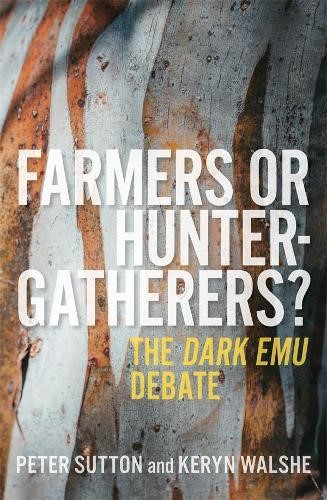Does this amount to ‘farming’ or ‘agriculture’?
Bruce Pascoe’s Dark Emu has stirred considerable controversy and recent work by Peter Sutton & Keryn Walshe has subject it to critical academic analysis. Not only questioning some of his evidence, they believe Pascoe has “fallen into a trap of privileging the language of agriculture above hunter-gatherer socioeconomic systems.” Eurocentic language like ‘agriculture’ and ‘farming’ impose colonial preference and resurrect old and deeply entrenched views about Progress, diminishing the rich culture followed by ‘hunter/gatherers’.
Tasmania was criss-crossed with native paths that intersected at significant sites like the Launceston Basin and while they were not places of sedentary occupation, movement was seasonal, not nomadic. Coastal occupation in winter was extended and involved (quite possibly) the construction of fish traps and certainly the construction (at least on the northwest coast) of elaborate huts sunk in the landscape. Occupation of the Launceston Basin was intensive and as it was also a site where different mobs intersected, it provided an opportunity for marriage and other ceremonies (as the proximate ochre sites evidence).
Tasmania has still to provide much more evidence of Aboriginal landuse and occupation that will inevitably challenge preconceptions. Pascoe’s work, which largely ignores Tasmania, however controversial has stimulated reaction and excited research.
Further reading: The Conversation June 18 2021. “How our new archaeological research investigates Dark Emu’s idea of Aboriginal ‘agriculture’ and villages.” Michael Westerway & Joshua Gorringe.
James Boyce, “on Bruce Pascoe and the ‘Dark Emu’ Debate : Transforming the national imagination.” The Monthly July 2021, 56-60.
Mark McKenna. “Bruce Pascoe has welcomed the Dark Emu debate – and so should Australia” https://www.theguardian.com/commentisfree/2021/jun/25/bruce-pascoe-has-welcomed-the-dark-emu-debate-and-so-should-australia

Read More The Launceston Basin
The Geomorphology of the kalamaluka-Tamar Valley
The kalamaluka-Tamar Valley is the product of 200 million years of geological evolution.
The story begins at a time when the old super-continent of Gondwanaland began splitting up, Antarctica was separating from Australia and the Tasman Sea was opening up. Tasmania was very much in the middle of these two movements when the SE part of the Australian continental plate was being stretched both from north to south and from east to west.
Tamar Valley Geology and British Settlement
British settlements, based on the traditions of British farming and shipping, needed arable land and protected anchorages for long-term survival. Well-watered farmland was not to be found easily near the mouth of the Tamar, near York Town or George Town, where the best port facilities were available. In contrast, good port facilities were not to be found at the head of the Tamar where well-watered farmland was available.
The Garden that became Launceston
Rivers wear away the ancient Tasmanian mountains, depositing their mineral wealth in flood plains and estuaries. This depositional richness is most prominent where rivers meet the sea and fine silt drops from the slowing surge. Birds whirl from black gum, paperbark, reed swamp and still water, their nests protruding from the reeds. Some extend their necks to consume the soft aquatic plants that grow in the turbid waters above the mud. Some are eaten by raptors, contact-killed in precipitous descents from above.
Does this amount to ‘farming’ or ‘agriculture’?
The work of Bruce Pascoe’s Dark Emu argues for a substantial shift in language from ‘hunter-gatherer’ to terms like ‘farming’ and ‘agriculture’.
Certainly, Indigenous land use has suffered the suggestion of ‘savage’ and ‘primitive’ for too long, but does that justify a shift to Eurocentric language with a particular meaning?
